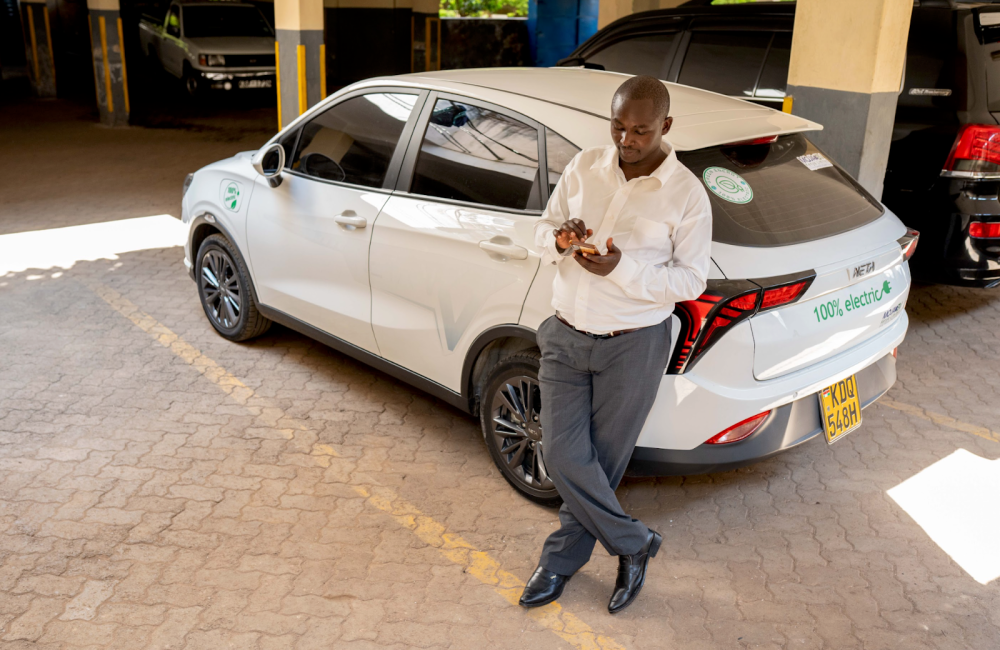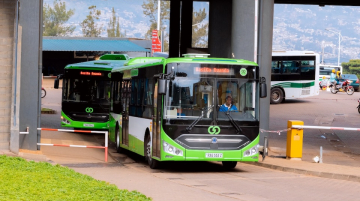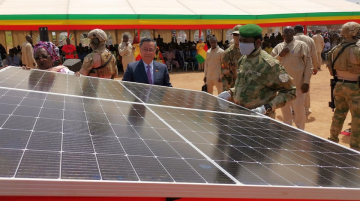
Chinese electric vehicles (EVs) are making savings easier for Kenyan taxi drivers like Paul Mwai. He is able to cut back close to $700 every month on fuel costs, which he is using to pay for his new car.
This is a major achievement in a country where the minimum wage is six times less than what Paul is saving, but for him to afford the car, the use of cheap lithium iron phosphate (LFP) batteries has played a major role.
Chinese EV maker Neta Auto uses Contemporary Amperex Technology Co.’s (CATL) fast-charging battery, Shenxing, for its NETA V, which Paul has acquired for his taxi business. The company plans on using economies of scale to increase sales. It also sees Africa as a promising new market, and taxi drivers and other low-income earners could be the demographic that could help them turn the tide against high tariffs imposed on Chinese products in the EU, one of its main markets.
Before shifting to the Chinese EV, Paul had a second-hand Suzuki Alto until a month ago, when he sold it to raise the initial capital to acquire the NETA V he is driving now.
He said that he compared the running costs of the Alto he was using and the NETA V’s needs and realized that the EV was much cheaper to operate.
The Alto is popular among Kenyan taxi drivers since it does not consume a lot of fuel compared to other vehicles in the same business.
“Another thing that motivated me to buy this car is that it is more comfortable than the Alto. Even the customers themselves are happy. On costs, I was spending $25-30 (Sh2,500 to 3,000), on a daily basis which added to about $750 (75,000) per month on fuel. If I’m charging from home, I’ll spend about $7, and this lasts me a whole day.”

During the interview, Paul charged his car for free at a charging station provided by Kenya Power, the country’s utility company, which is seeking to popularize EVs in the country. Apart from saving on fuel, other advantages Paul has experienced include low maintenance costs.
He added, “While using a fuel car, I had to keep changing my spark plugs, oils, oil filters, air filters, the gearbox, the transmission system, etc. But for this one, it’s just a motor since I’m not using those things. There is no servicing the engine all the time like with the regular vehicles.”
Since passenger comfort matters to Paul, he said that he can air condition his car without having to worry about the fuel costs that increase with such activities.
During a ride in the car with Paul, he turned on the AC because it was hot. He said this was impossible with fuel-efficient cars like the one he ditched.

“My friend just tried to call an Alto driver here and told him to put on the AC. They won’t because fuel consumption increases with such comforts in the car.
Changing Perspectives on EVs in Kenya
Many people in Kenya find it difficult to acquire new vehicles because of the cost, but Paul’s perspective has changed. He has now become a self-proclaimed EV adoption ambassador advising his colleagues in the taxi business to make the shift to experience freedom from having to rely on petrol for their vehicles, but with a disclaimer.
“Before buying the EV, you need to do your calculations very well because the money you spend on fuel and servicing the petrol car is not coming back. In my case, I saw this NETA as cheap because I’m paying for it with the money that I would have used to buy fuel and service the petrol car. That is how I did my calculations.”

Paul topped up the money he got from selling the petrol car with a bank loan because he didn’t have all the money needed for the EV in cash. He added that Moja EV also connects buyers who need financing to banks, which makes the car-buying process much easier for new customers.
As a proponent of shifting to renewable energy and green mobility, he added that speaking with his peers in the taxi-hailing industry is bearing fruit. Already, one of his friends has bought an EV but the others are still apprehensive about the upfront cost of an EV.
Climate Change Concerns in Kenya’s Transport Sector
With climate change effects hitting the poorest countries the hardest, in Kenya, it is a big issue even for drivers like Paul. With fossil fuel-powered cars, he said that pollution is a concern though not on a large scale for an economy like Kenya’s.
“This car is saving our environment because it is emission-free, and that is one thing that motivated me. If you look at the way things are right now, we can go for a long time without rain, and this is partly because of what we are using. Diesel and petrol vehicles are destroying our motherland, and that is why I’m advocating for green energy.”
But Paul’s biggest challenge with EVs in Kenya is the inadequate charging infrastructure. The charging stations offered by different stakeholders are not well distributed across the city, forcing EV drivers to either charge at home or travel long distances to a station like the Kenya Power one.
With the NETA V’s 380-kilometer range on full charge, Paul is assured that he will not run out of power because he also has the portable charger which he can use to charge his car at home or wherever he goes- no matter the distance.
Apart from this, Paul added that the 8-year battery and the five-year motor warranty for the NETA V give him peace of mind using his car.
Shift From Petrol and Diesel Cars to EVs in Kenya

While Paul’s case is unique in a country like Kenya, where he is a low-wage earner, EV adoption still has to a long way to go to catch up with the second-hand vehicle market. Spare parts for EVs, service and reliability have to be assured before drivers make the big jump. Toyota is the most popular car brand in Kenya and the reason has been the availability of parts and the ease of servicing the cars. If the EVs can match this, and later on the price, then Kenya’s EV market will pick.
All that is needed is an assurance that a car operating on electricity is as reliable as any other brand that they have grown accustomed to.
Paul added that since the wheels, brake pads, shocks, and other easily available parts need replacing often, he has no reason to go back to a petrol car.
“I can see the value of my money, so I don’t think it’s a good idea to go back there.”












